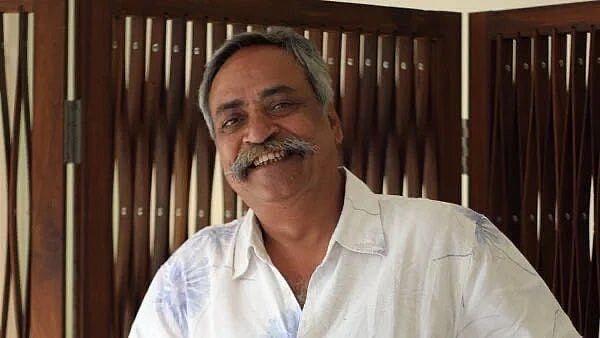
Piyush Pandey
Credit: X/@nsitharaman
What you leave behind is not what is engraved in stone monuments, but what is woven into the lives of others. -Pericles
In a country like India, where polycultural practices thrive, Piyush Pandey’s legacy will remain etched in the advertising world for his inclusive, culture-driven storytelling that resonated with people from all walks of life. In India — where dialects change every few kilometres and festivals outnumber the months—storytelling is no simple art form. It requires creativity, as well as cultural sensitivity, empathy, and an ear attuned to the pulse of the people. Few have balanced this with Piyush Pandey, the creative icon who changed the course of Indian advertising and demonstrated to the world that culturally rooted stories can transcend borders.
For Piyush, culture was not an extrasense of storytelling — it was storytelling. He redefined how India speaks to itself through brands and media in a polycultural nation seeking its voice. Whether for brands like Fevicol, Cadbury, or Indian Railways, Pandey’s campaign work always had a distinct Indian flavour. They weren’t adopting Western advertising formulas and misleadingly polished imagery; they were speaking in the recognisable dialect of everyday life — the chatter of neighbours, the haggling of street vendors, conversations around a family dining table, and joyful laughter shared by everyone. “Stories are not out of fashion. Everyone loves lovely stories,” Piyush claimed in an interview. Good stories are timeless. It remains unchanged in this reel- and algorithm-driven era.
What made Pandey’s work distinctive was his ability to translate the local into the universal. He believed that the heart of any story is to elicit human emotion — happiness, love, pride, nostalgia — emotions which create bonds between us even when culture divides us. Pandey’s characters were not archetypes but representations of ordinary Indians. Whether it was the cricket enthusiast in a Cadbury spot or the provincial humour of the Fevicol carpenter, Pandey’s protagonists were often the audience.
That originality was the basis of his success in a country that is at once one and many. Pandey’s mode of storytelling was fundamentally democratising. He listened first — walking around towns, observing people, and collecting phrases, gestures, and moods that would later contribute to his stories. His creative process did not begin in conference rooms but in chain shops and crowded bazaars. As he noted, “The people on the street” were a primary source of inspiration, and that’s where he sourced a pulse for the nation. By doing this, he demonstrated that to appeal to an audience, one needs to understand them as human beings, not as market segments.
His philosophy also takes aim at a dangerous myth — that young audiences don’t value stories any more. “Gen Z are not idiots,” Pandey said. “They love great stories as well.” This could not be truer today, particularly in a world dominated by screens and short-form content. While they may scroll faster, they also stop for a story that comes across as authentic. Culturally grounded campaigns — in the age of culturally rooted content — from Swiggy’s regional humour to Cred’s nostalgically absurd ads all exist because of the legacy of decision-making, deployment, and success of the storytelling tradition that Pandey has forged.
At its simplest, Piyush Pandey’s legacy is grounded in his poise that India’s diversity is not a disadvantage but a pool of creativity. Telling stories in India means navigating multiple interconnected worlds — all the while being able to narrow the attention to a single story that connects them. His career is evidence that culture can be not only a lens but also a bridge. The lens allows the storytellers to see the world in its depth and breadth more faithfully. The same lens can also serve as a bridge, creating a connection of hearts across distances.
Ultimately, Pandey reminded us that the best stories don’t simply sell. They celebrate people. They give us a reason to recognise that, no matter whether we are speaking Hindi, Kannada, Bengali or any other Indian language, we laugh the same way, we cry the same way, and we dream the same way. In the language of storytelling, India represents diversity but has always spoken with one voice — the voice that Piyush Pandey helped us hear so beautifully and compellingly.
(Ishayu Gupta is with the School of Media and Communication, University of Leeds, UK, and Neelatphal Chanda is with the Department of Media Studies, Christ [deemed to be] University)